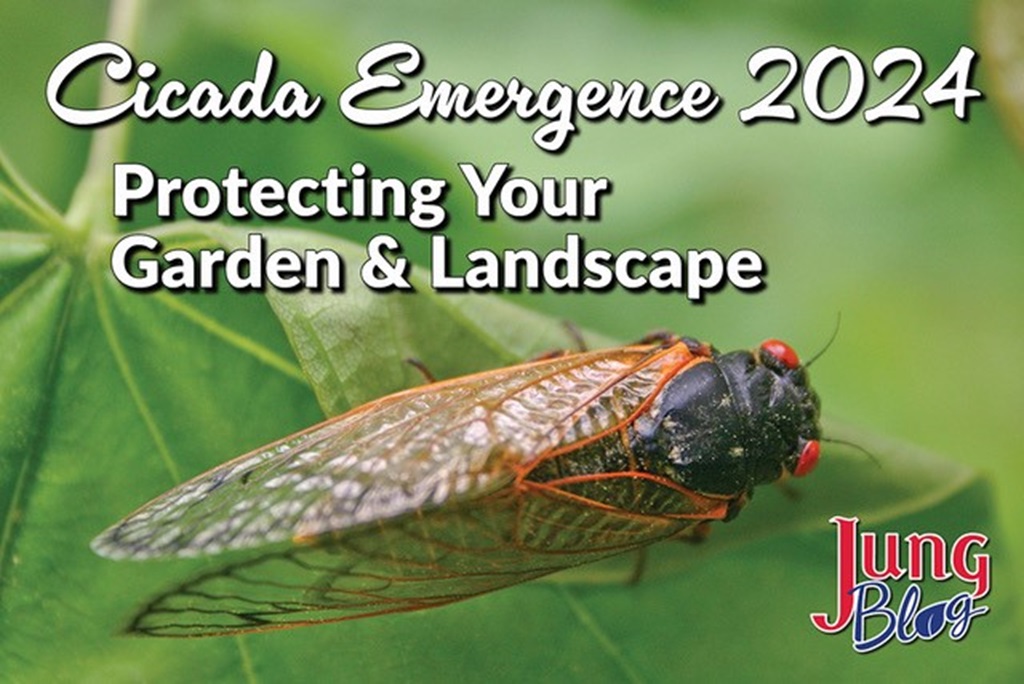
Have you ever heard the buzz of cicadas on a hot summer afternoon? Their distinct sound carries across the landscape as a reminder that summer is upon us. These insects will be even more prominent this summer in certain parts of the country. Let’s dive in and learn about these fascinating insects and their effect on the landscape.
What Are Cicadas?
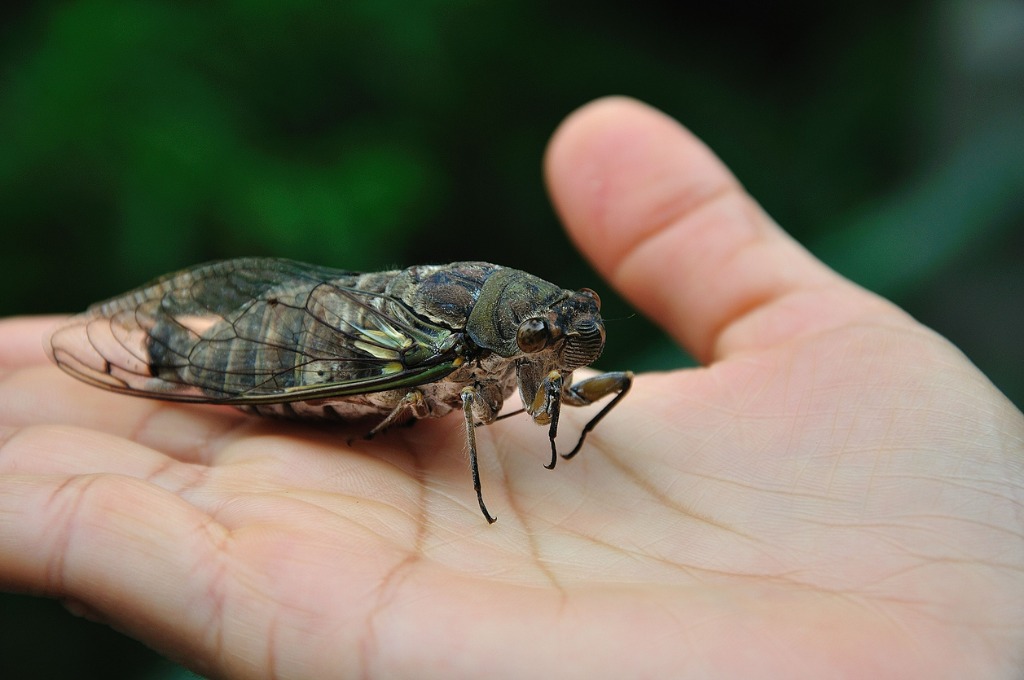
Cicadas are a group of insects with over 1,300 species across the globe, with most of them living in tropical areas. They’re also closely related to leafhoppers and aphids. In the Midwest, we have nearly a dozen species of cicadas, with the most common one being the dog-day cicada. The cicadas we usually hear in the Midwest are known as annual cicadas because they complete their life cycle in 2-5 years, with some adults emerging in the landscape each year. Annual cicadas are typically heard from July to September, especially on warm, sunny days.
Their bodies are camouflaged into the surrounding landscape, so we usually don’t see them. Still, we can sure hear their high-pitched humming sound! These sounds are caused by membranes on their bodies that are rapidly flexing like a drum. Some males can produce a sound that exceeds 100 decibels!
Annual Cicadas vs. Periodical Cicadas Differences
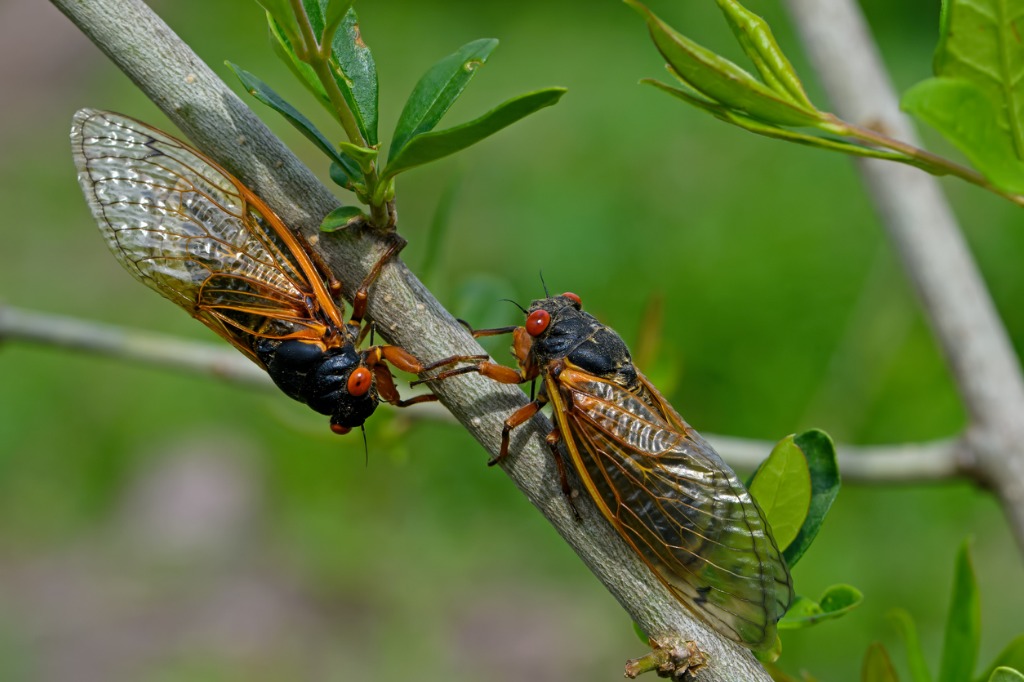
We hear the annual cicadas every year, but there’s another group of cicadas known as periodical cicadas. These cicadas are smaller than annual ones, so we may not see them. However, they could be visible in lawns and trees if large numbers are present, which is often the case for periodical cicadas. These insects emerge in groups known as broods every 13 or 17 years in different areas of the U.S. In other words, you’ll only hear them once every 13 or 17 years. The U.S. has many broods scattered across the country’s eastern half, with each brood set to emerge in different years. Note: Broods are named using Roman numerals. An example is 2024 when Brood XIII will emerge in southern Wisconsin, Northern Illinois, and parts of Iowa. This brood is part of the 17-year cycle of cicadas, and you may be wondering, what should I expect during this emergence?
What To Expect During A Cicada Emergence
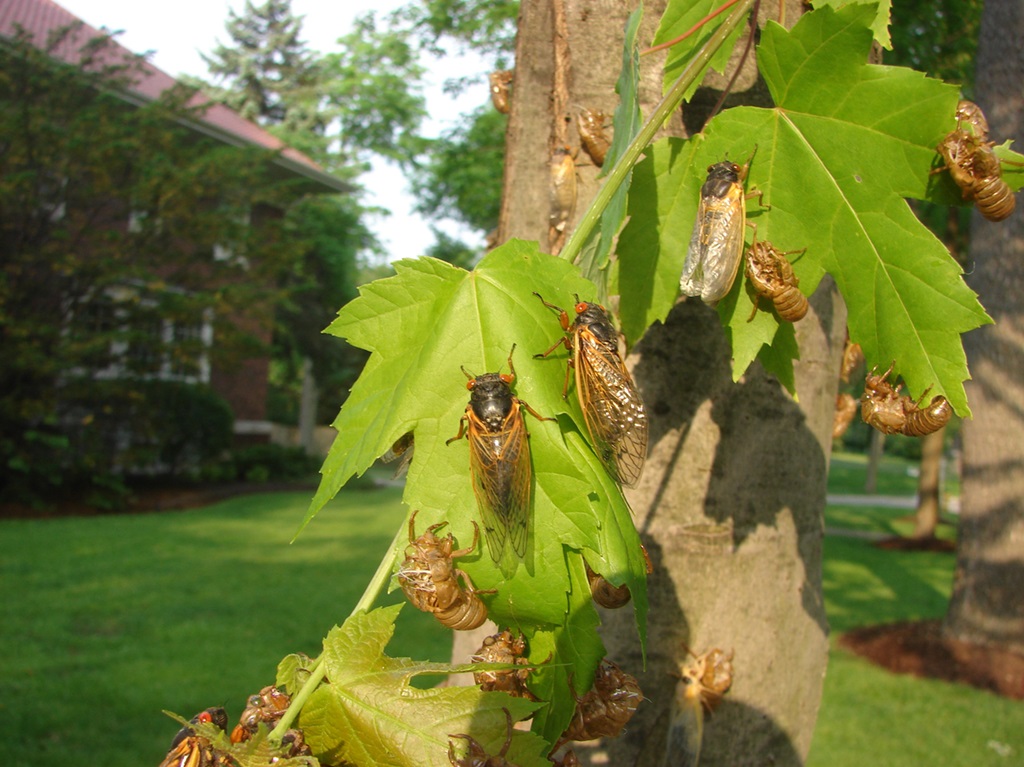
Unlike annual cicadas, the periodical group emerges in late spring and early summer. Depending on your location, this can occur anytime from mid-May to late June. 2024 will be unique because two broods of cicadas are emerging in the same year (one 13-year brood and one 17-year brood). As mentioned, one group will be in the upper Midwest, while the other group will be primarily in southern Illinois and Missouri, with isolated populations appearing across the Southeast U.S.
Since they only emerge every 13 or 17 years, these cicadas have limited time to survive, so they come up in large numbers to defeat their predators and reproduce. Their predators include birds and other types of vertebrae.
It’s hard to know how many cicadas will be present in certain areas, as many of these populations are localized, so you may notice them in some spots but not others. Between the two broods emerging this year, trillions of cicadas will be present, which sounds like a lot. However, they will be scattered across different states.
The sound levels of cicadas are sometimes a nuisance for outdoor events, but it’s hard to predict if they’ll be an issue for specific activities since they appear in different locations.
Effects of Cicadas on Summer Landscapes
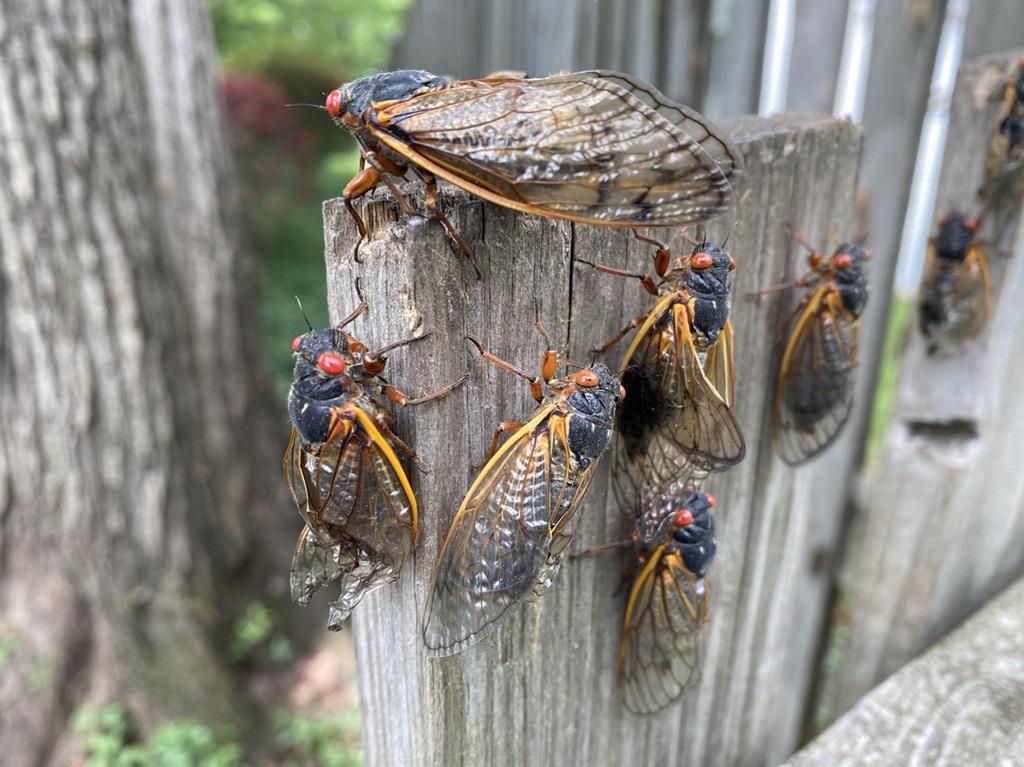
Will cicadas impact my landscape? This question is commonly asked when a cicada brood is expected to emerge. In general, the impacts on the landscape should be minimal, but cicadas may damage shrubs and trees. One thing to remember is that these cicadas will only be present for a few weeks, so there’s no need to control their populations with insecticides or traps. Also, their noise may become a nuisance, but they won’t be here for long.
Periodical cicadas deposit their eggs in the twigs of woody plants, often leaving slits in the branches that create dieback, which is known as flagging. This can occur on any wooden plant, but the damage harms young trees and shrubs more. You can help your woody plants in a few ways:
- Consider planting new shrubs and trees after the cicadas have ceased activity, possibly in June or early July. Remember, these populations are very localized, so your landscape may not see any activity, while areas a few miles away may see lots of cicadas.
- Another control strategy is mesh netting, which can be placed on shrubs and young trees. The netting should be applied when you first begin hearing the sound of male cicadas buzzing. Just make sure the holes in the netting are smaller than ¼” to keep the insects off the plants.
- Mature trees may see twig dieback, but they can tolerate it without long-term effects.
- If possible, delay fall or winter pruning the year before a cicada emergence to reduce the amount of pruning needed if any plants are damaged. A quick internet search can help you discover where the next brood will emerge.
If you’re not able to protect your woody plants, you may encounter a few damage symptoms. One symptom is called epinasty, which sounds scary but is simply a name that describes unnatural-looking new growth on a damaged branch. Often, we’ll see one side of a branch damaged by the cicadas, while the other side is left unharmed, resulting in strange-looking new growth. This unnatural curve may cause the new growth to break off.

If you see dieback on your plants, the affected areas should be pruned back to healthy growth. Twigs that are severely damaged should be removed. And once you make those cuts, it’s best to destroy what you’ve removed to prevent the cicada eggs from hatching. Cicadas also feed on the roots of woody plants, but the damage is very minimal, and the plants will tolerate it with no issues.
And there you have it! This amazing display of cicadas isn’t something we’ll see often. Still, it’s good to be aware of their presence and understand the impacts they may have on the landscape.
Other Recommended Reading

- Controlling Common Vegetable Garden Pests
- A Quick Guide To Pesticides
- Garden Pests: Japanese Beetles
- Horticultural Oil For Pest Control

At Jung Seed Co, we strive to be your go-to guide for all your gardening needs. Our YouTube channel The Garden Doctor by Dick Zondag is where he provides gardening tips for all levels of gardeners. When you need reliable gardening advice, turn to the trusted experts at Jung.
View our new catalog online or browse our website for your gardening favorites. To receive info on new products, exclusive deals, and specials, be sure to sign up for our weekly email. Join our Facebook page, to discuss all things gardening!
About the Author: Matthew Olson is a professional horticulturist and garden writer. He has a bachelor’s degree in horticulture from UW-River Falls and is a certified professional with the Minnesota Nursery and Landscape Association. His enthusiasm for plants and the outdoors brought him to the green industry. He regularly writes articles about gardening for both gardeners and industry professionals. He can be reached at matt@mattolsonhorticulture.com.